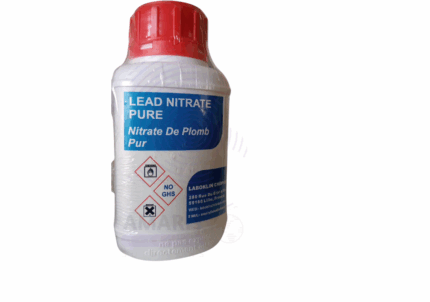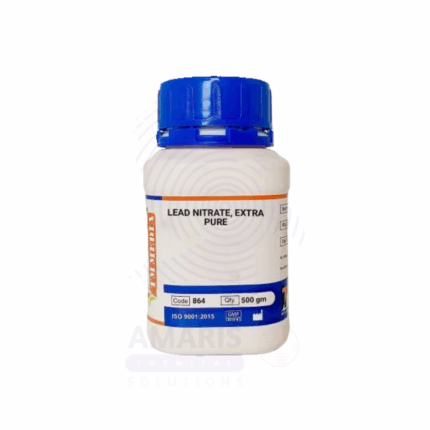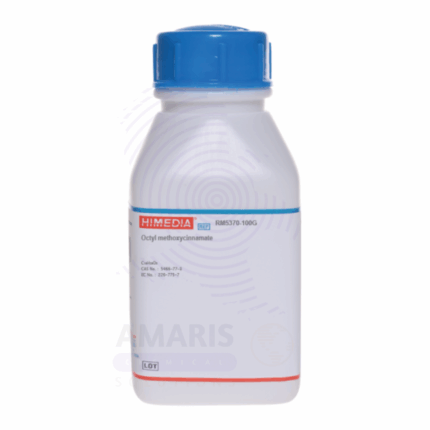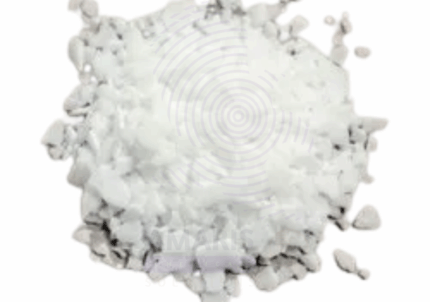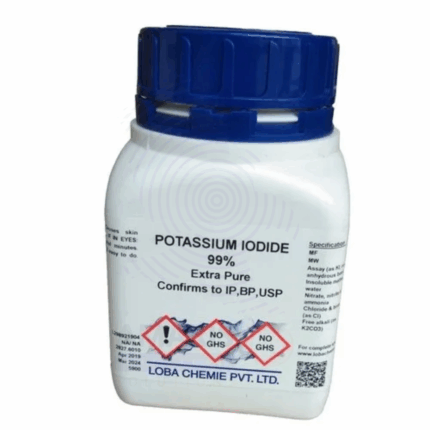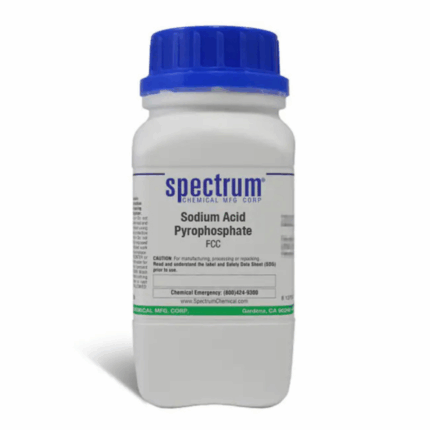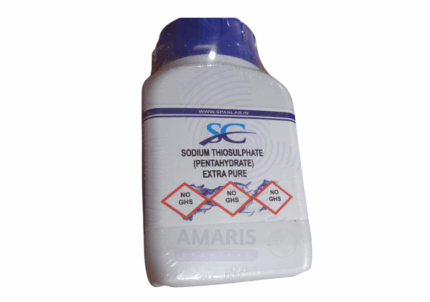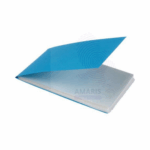
Polyglyceryl Extra Pure
$ 18.20 Original price was: $ 18.20.$ 18.09Current price is: $ 18.09.
Polyglyceryl Extra Pure refers to a high-purity class of non-ionic surfactants and emulsifiers derived from glycerol units. These compounds are widely used in cosmetics, pharmaceuticals, and food formulations due to their excellent skin compatibility, emulsifying properties, and biodegradability.
Polyglyceryls come in various forms (e.g., Polyglyceryl-3, Polyglyceryl-6, Polyglyceryl-10), each offering different levels of hydrophilicity and emulsifying strength. In cosmetics, they help create stable oil-in-water emulsions, ideal for lotions, creams, cleansers, and sunscreens. In pharmaceuticals, their non-toxic and non-irritating nature makes them suitable carriers for active ingredients. In food products, they function as safe emulsifiers and stabilizers, supporting clean-label and natural product development.
This extra pure grade ensures low impurity levels, minimal odor, and consistent performance, making it ideal for sensitive applications. Store tightly sealed in a cool, dry place away from heat and light to maintain its stability and quality.
Polyglyceryl Extra Pure
Primary Uses
- Cosmetic & Personal Care Industry:
- Used as a mild, non-ionic emulsifier in skincare and haircare products.
- Common in natural and organic formulations due to its biodegradability and plant-derived origin.
- Helps stabilize oil-in-water emulsions in lotions, serums, creams, and sunscreens.
- Provides skin-conditioning effects and improves spreadability of cosmetic formulations.
- Food Industry:
- When food-grade, it serves as an emulsifying agent in baked goods, sauces, and confectionery.
- Enhances texture, shelf-life, and prevents phase separation in emulsified food systems.
Secondary Uses
- Pharmaceutical Industry:
- Acts as an emulsion stabilizer in topical ointments and creams.
- Used in drug delivery systems to enhance dispersion of active ingredients.
- Industrial Applications:
- Used in biodegradable lubricants and environmentally friendly surfactant systems.
- Suitable for formulations requiring low toxicity and high skin compatibility, such as baby care products or specialty cleaners.
| PACK SIZE |
500 grams Plastic Tin |
|---|
1. Basic Identification Attributes
- Chemical Name: Polyglyceryl (General term for polyglycerols; commonly Polyglyceryl-3, -6, -10, etc.)
- CAS Number: Varies by polymerization degree. Example for Polyglyceryl-3: 25618-55-7
- HS Code: 3402.13.00
- Molecular Formula: (C₃H₈O₃)ₙ where n = number of glycerol units (varies)
- Synonyms:
- Polyglycerin
- Polyglycerol
- Poly(glycerol)
- Glycerol oligomer
2. Physical & Chemical Properties
- Physical State: Viscous liquid or waxy solid (depending on chain length)
- Color & Odor: Colorless to pale yellow; slight characteristic or odorless
- Boiling Point & Melting Point:
- Boiling Point: >200 °C (decomposes before boiling)
- Melting Point: Softens ~30–60 °C (varies with polymer)
- Density/Specific Gravity: ~1.2 g/cm³
- Solubility:
- Soluble in water and alcohols
- Insoluble in most oils
- pH Level: Neutral (~5.5–7.5) in aqueous solution
- Vapor Pressure & Volatility: Negligible
- Flash Point: >200 °C (closed cup, approximate)
- Autoignition Temperature: ~370 °C
- Viscosity: High (increases with chain length)
3. Safety & Hazard Attributes
- Hazard Class (GHS Classification):
- Not classified as hazardous
- NFPA Ratings:
- Health: 0
- Flammability: 1
- Reactivity: 0
- Exposure Limits:
- No specific limits established
- Reactivity:
- Stable under standard conditions
- Avoid strong oxidizers and acids
4. Storage & Handling Attributes
- Storage Conditions:
- Store in cool, dry, well-ventilated area
- Recommended temperature: 15–25 °C
- Incompatible Materials:
- Strong oxidizing agents
- Container Type:
- Sealed HDPE or stainless steel containers
- Shelf Life & Expiration Date:
- 2 years under proper storage
- Special Handling Requirements:
- Use gloves and goggles for large-scale handling
5. Regulatory & Compliance Attributes
- Regulatory Status:
- Generally regarded as safe (GRAS) by FDA
- Listed in EU (CosIng) as approved cosmetic ingredient
- Hazard Symbols (GHS Pictograms):
- None required
- Transportation Restrictions:
- Not regulated for transport
- Waste Disposal Method:
- Dispose via local regulations; non-hazardous
6. Environmental & Health Impact
- Ecotoxicity:
- Low aquatic toxicity
- Persistence in Environment:
- Readily biodegradable
- Carcinogenicity/Mutagenicity:
- Not classified as carcinogenic or mutagenic
- Biodegradability:
- Yes, readily biodegradable
SAFETY PRECAUTIONS
Personal Protective Equipment (PPE):
- Wear chemical-resistant gloves (e.g., nitrile or neoprene).
- Use protective safety goggles or face shield to prevent eye exposure.
- Wear a laboratory coat or protective apron.
- Use a dust mask or respirator if handling powdered form in poorly ventilated areas.
Handling:
- Avoid contact with eyes and prolonged skin exposure.
- Prevent inhalation of dust or mist.
- Handle in a well-ventilated environment.
- Practice proper hygiene after handling.
Storage:
- Store in a tightly sealed container.
- Keep in a cool, dry place away from direct sunlight.
- Avoid exposure to strong oxidizing agents or strong acids.
FIRST AID MEASURES
Inhalation:
- Move to fresh air.
- Seek medical attention if symptoms such as coughing, headache, or dizziness occur.
Skin Contact:
- Rinse skin with soap and water.
- Remove contaminated clothing.
- Get medical advice if irritation or rash develops.
Eye Contact:
- Rinse thoroughly with water for at least 15 minutes.
- Keep eyelids open and remove contact lenses if present.
- Seek medical attention if irritation persists.
Ingestion:
- Rinse mouth with water.
- Do not induce vomiting unless directed by a medical professional.
- Seek medical help if symptoms appear.
FIRE FIGHTING MEASURES
Flammability:
- Generally not highly flammable but may support combustion at high temperatures.
Extinguishing Media:
- Use water spray, dry chemical, foam, or carbon dioxide.
Hazardous Combustion Products:
- May produce carbon monoxide (CO), carbon dioxide (CO₂), and irritating organic vapors.
Firefighter Protection:
- Firefighters should wear full protective clothing and self-contained breathing apparatus (SCBA).
- Avoid inhaling vapors or smoke from combustion.


 Preservatives(food)
Preservatives(food) Flavor Enhancers
Flavor Enhancers Acidulants
Acidulants Sweeteners
Sweeteners Antioxidants
Antioxidants Colorants(food)
Colorants(food) Nutraceutical Ingredients (food)
Nutraceutical Ingredients (food) Nutrient Supplements
Nutrient Supplements Emulsifiers
Emulsifiers
 Collectors
Collectors Dust Suppressants
Dust Suppressants Explosives and Blasting Agents
Explosives and Blasting Agents Flocculants and Coagulants
Flocculants and Coagulants Frothers
Frothers Leaching Agents
Leaching Agents pH Modifiers
pH Modifiers Precious Metal Extraction Agents
Precious Metal Extraction Agents
 Antioxidants(plastic)
Antioxidants(plastic) Colorants (Pigments, Dyes)
Colorants (Pigments, Dyes) Fillers and Reinforcements
Fillers and Reinforcements Flame Retardants
Flame Retardants Monomers
Monomers Plasticizers
Plasticizers Polymerization Initiators
Polymerization Initiators Stabilizers (UV, Heat)
Stabilizers (UV, Heat)
 Antifoaming Agents
Antifoaming Agents Chelating Agents
Chelating Agents Coagulants and Flocculants
Coagulants and Flocculants Corrosion Inhibitors
Corrosion Inhibitors Disinfectants and Biocides
Disinfectants and Biocides Oxidizing Agents
Oxidizing Agents pH Adjusters
pH Adjusters Scale Inhibitors( water)
Scale Inhibitors( water)
 Antioxidants(cosmetic)
Antioxidants(cosmetic) Emollients
Emollients Fragrances and Essential Oils
Fragrances and Essential Oils Humectants
Humectants Preservatives
Preservatives Surfactants(cosmetic)
Surfactants(cosmetic) Thickeners
Thickeners UV Filters
UV Filters
 Fertilizers
Fertilizers Soil Conditioners
Soil Conditioners Plant Growth Regulators
Plant Growth Regulators Animal Feed Additives
Animal Feed Additives Biostimulants
Biostimulants Pesticides (Herbicides, Insecticides, Fungicides)
Pesticides (Herbicides, Insecticides, Fungicides)
 Active Pharmaceutical Ingredients (APIs)
Active Pharmaceutical Ingredients (APIs) Excipients
Excipients Solvents(pharmaceutical)
Solvents(pharmaceutical) Antibiotics
Antibiotics Antiseptics and Disinfectants
Antiseptics and Disinfectants Vaccine Adjuvants
Vaccine Adjuvants Nutraceutical Ingredients (pharmaceutical)
Nutraceutical Ingredients (pharmaceutical) Analgesics & Antipyretics
Analgesics & Antipyretics
 Analytical Reagents
Analytical Reagents Solvents(lab)
Solvents(lab) Chromatography Chemicals
Chromatography Chemicals Spectroscopy Reagents
Spectroscopy Reagents microbiology-and-cell-culture-reagents
microbiology-and-cell-culture-reagents Molecular Biology Reagents
Molecular Biology Reagents Biochemical Reagents
Biochemical Reagents Inorganic and Organic Standards
Inorganic and Organic Standards Laboratory Safety Chemicals
Laboratory Safety Chemicals Specialty Laboratory Chemicals(Special Laboratory Equipment)
Specialty Laboratory Chemicals(Special Laboratory Equipment)
 Demulsifiers
Demulsifiers Hydraulic Fracturing Fluids
Hydraulic Fracturing Fluids Scale Inhibitors(oil)
Scale Inhibitors(oil) Surfactants(oil)
Surfactants(oil) Drilling Fluids
Drilling Fluids
 Dyes and Pigments
Dyes and Pigments Bleaching Agents
Bleaching Agents Softening Agents
Softening Agents Finishing Agents
Finishing Agents Antistatic Agents
Antistatic Agents
 Admixtures
Admixtures Waterproofing Agents
Waterproofing Agents Sealants and Adhesives
Sealants and Adhesives Curing Compounds
Curing Compounds Concrete Repair Chemicals
Concrete Repair Chemicals Anti-Corrosion Coatings
Anti-Corrosion Coatings
 Surfactants(cleaning)
Surfactants(cleaning) Builders
Builders Enzymes
Enzymes Solvents (Cleaning)
Solvents (Cleaning) Fragrances
Fragrances
 Electronic Chemicals
Electronic Chemicals Catalysts
Catalysts Lubricants
Lubricants Photographic Chemicals
Photographic Chemicals Refrigerants
Refrigerants Automotive chemicals
Automotive chemicals Pyrotechnic Chemicals
Pyrotechnic Chemicals
 Biodegradable Surfactants
Biodegradable Surfactants Bio-based Solvents
Bio-based Solvents Renewable Polymers
Renewable Polymers Carbon Capture Chemicals
Carbon Capture Chemicals Wastewater Treatment Chemicals
Wastewater Treatment Chemicals
 Pigments
Pigments Solvents(paint)
Solvents(paint) Specialty Coatings
Specialty Coatings Binders/Resins
Binders/Resins Additives
Additives Driers
Driers Anti-Corrosion Agents
Anti-Corrosion Agents Functional Coatings
Functional Coatings Application-Specific Coatings
Application-Specific Coatings
 Fresh Herbs
Fresh Herbs Ground Spices
Ground Spices Whole Spices
Whole Spices Spice Blends
Spice Blends Dried Herbs
Dried Herbs
 Leavening Agents
Leavening Agents Dough Conditioners
Dough Conditioners Flour Treatments
Flour Treatments Fat Replacers
Fat Replacers Decoratives
Decoratives Preservatives(baking)
Preservatives(baking)
 Plasticizers & Softeners
Plasticizers & Softeners Reinforcing Agents
Reinforcing Agents Adhesion Promoters
Adhesion Promoters Vulcanizing Agents
Vulcanizing Agents Antidegradants
Antidegradants Blowing Agents
Blowing Agents Fillers & Extenders
Fillers & Extenders Accelerators & Retarders
Accelerators & Retarders


